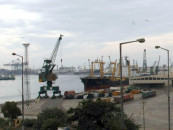Further rate hike unlikely to control inflation
SBP expected to increase policy rate by 100-200 basis points

Pakistan’s economy has slowed down significantly partly due to a persistent hike in the key policy rate to a record high at 20%. The rate hike has lately become “ineffective” and a further rise will only aggravate the economic woes.
The policy rate is a tool available with the central bank to control inflation caused by a pick-up in demand for goods. The central bank has said in the past that it could not control supply-side inflation like the increase in energy tariffs.
The rate hike has made bank financing expensive for industries, households and the government, which is the largest borrower. More importantly, the high policy rate and other administrative measures are badly hitting exports and worsening the current account deficit.
The textile sector, which is the largest export earner, is said to be on the verge of default, indicating a situation that may lead to the collapse of banks like that in the West in recent weeks.
Reports suggest the central bank is considering increasing the key policy rate by 100-200 basis points.
Talking to The Express Tribune, Arif Habib Limited (AHL) economist Sana Tawfik said “aggregate demand for banking credit has already slowed down…gone dead. Contraction in the growth of large-scale manufacturing sector is an example of that.”
“A further hike in the rate will be ineffective in relation to controlling inflation, as this is coming from the supply side. Rather, the hike will worsen economic activities in the country.”
She said the massive devaluation of the rupee against the US dollar was already fulfilling the purpose to fix the faltering economy and “there is no need to further increase the rate.”
The biggest casualty of the rate hike would be the government itself rather than supporting it in overcoming the economic and financial crisis. The government is the largest borrower from domestic banks and has taken 83% of total deposits in loans.
“A one-percentage-point hike in the key policy rate is estimated to increase the government’s interest payments by Rs90-100 billion in a year.”
Another analyst said interest payments would surge by Rs175-200 billion in a year following a one-percentage-point rise in the rate.
He said the government should open imports for the export sector like textile as the growth in exports was the key to increasing foreign earnings, narrowing down the current account deficit and improving the balance of payments.
“The government should prioritise import of raw material for the export sector like the way it ensures import of petroleum products.”
The government may continue to keep a check on imports for domestic consumption.
On the other hand, a little growth in economic activities including domestic consumption is a must to let people keep their jobs and collect the targeted tax revenue this year.
Experts said the economic growth may drop in the range of 1% to slightly negative in the current fiscal year compared to 6% growth in the previous year.
Tawfik said AHL had projected that the central bank would hike the key policy rate by 100 basis points to 21% in its monetary policy meeting scheduled for April 4, 2023.
The bank may increase the rate on the recommendation of the International Monetary Fund (IMF) to revive the stalled loan programme, which has become a must to unlock foreign funding of billions of dollars.
“The IMF has recommended increasing the rate to ensure there is no way left to create demand for credit and cause inflation,” she said.
The IMF says the government may increase social spending to protect the vulnerable segments, but who would ensure it reaches the deserving people, she said.
Secondly, when the economy is slowing down, its revenue collection remains lower than the requirement and it is largely relying on bank financing to meet budgeted expenditures, then how the government would increase social spending.
Published in The Express Tribune, March 23rd, 2023.
Like Business on Facebook, follow @TribuneBiz on Twitter to stay informed and join in the conversation.


















COMMENTS
Comments are moderated and generally will be posted if they are on-topic and not abusive.
For more information, please see our Comments FAQ